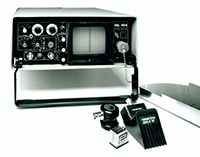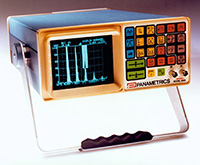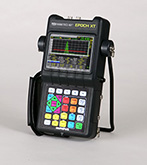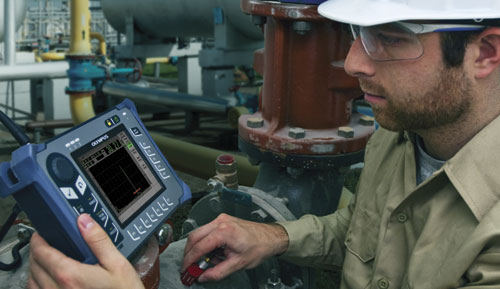1.2 History of Flaw Detection



The reflection and transmission of high frequency sound waves has long been an important tool for evaluating the integrity of welds as well as for testing structural metals, pipes and tanks, boiler tubes, railroad rails and axles, aerospace composites, and many other industrial applications. When used appropriately by a qualified operator, ultrasonic NDT is quick and reliable, usually requires no test piece preparation other than wetting with ultrasonic couplant, has no specific safety hazards or regulatory licensing requirements associated with its use. Ultrasonic flaw detection has been a valuable quality assurance tool for many years now.
As noted in the previous section, the roots of ultrasonic testing go back to early experimental work in the 1930s, and the first practical commercial ultrasonic flaw detector, the Supersonic Reflectoscope, was introduced in 1945 by Sperry Products. Over the next twenty years, the technique gained increasing acceptance and a number of manufacturers introduced ultrasonic flaw detectors. Early instruments used vacuum tubes, and were large and heavy and required an AC power source. Solid-state circuitry permitted the introduction of smaller, battery-power instruments in the 1960s, thus making ultrasonic testing more practical for field applications.

All of these early instruments utilized analog signal processing, and like all analog instruments they were subject to calibration drift. In 1984, Olympus NDT predecessor Panametrics introduced the EPOCH 2002, the world’s first field portable all-digital flaw detector. Since then, digital instruments have become standard, providing digital stability in calibration, digital precision in measurements, on-board data logging, and the ability to share screen images, test records, and setups with computers.
While the basic technology is now a familiar one, ongoing developments in hardware and software have resulted in ever smaller and more capable instruments. Conventional ultrasonic flaw detection using small, hand-held instruments with single element transducers is well established as a quality control technique in many manufacturing and service industries. In recent years there has been growing interest in phased array systems that use sophisticated technology based on multi-element probe assemblies to generate steered beams and create cross-sectional pictures similar to those in medical ultrasound imaging. These instruments are also commonly used for weld inspections.